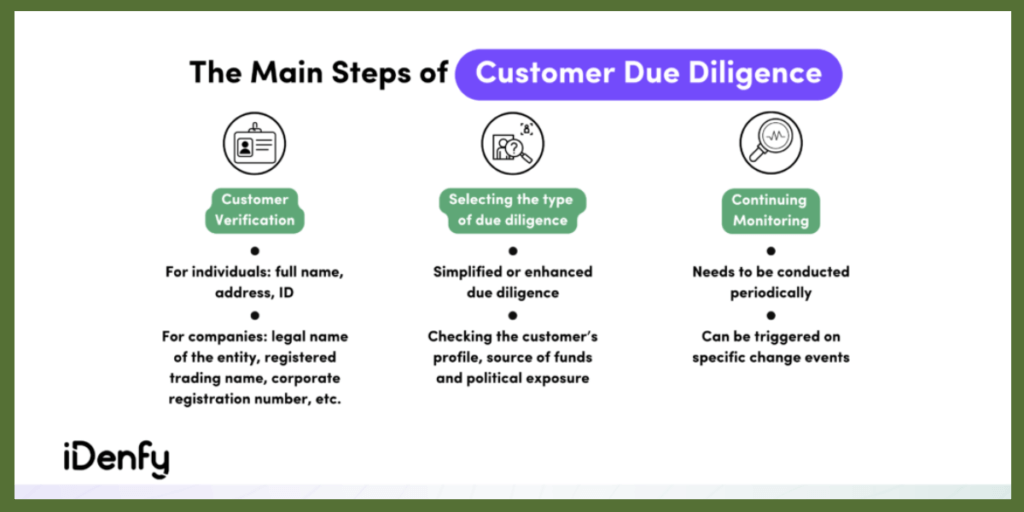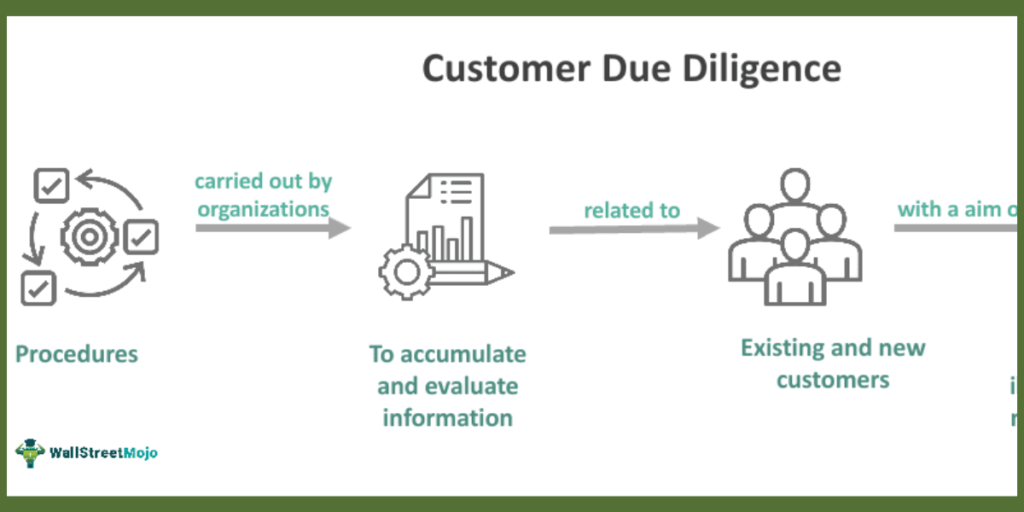Introduction to when should a bank apply customer due diligence
when should a bank apply customer due diligence:-In the financial services industry, a very important concept is Customer Due Diligence (CDD). Which requires identification of who your clients are and assessing risks of money laundering and terror funding. This allows banks and financial institutions to comply with regulations and gain the trust of customers. In this blog, we will delve into when banks should perform CDD, why it is relevant, and the steps to implement it.
The Importance of CDD for Banks and Financial Institutions
To adhere to regulatory compliance, along with mitigating risk banks and financial institutions need to start looking into CDD. The CDD is used to prevent crimes such as money laundering or terrorist financing. It also serves the purpose of not damaging your institution’s reputation and allowing trust with clients. Banks, therefore get the leverage to know who they are dealing with and at the same time stay compliant.

when should a bank apply customer due diligence
Protecting Against Financial Crimes
Banks are at great risk of financial crimes and CDD is their first strong line of defense. This can also help to identify suspicious activities and patterns in operations so that they can be nipped in the bud! Compliance with the CDD will allow banks to reduce the chance of unwittingly participating in some illegal actions and, consequently, help protect their capital and reputation as a company.
Building Trust with Customers
Now to be more serious, in the banking sector trust is everything. Customers must feel safe with their money With CDD, banks prove their ability to secure and comply while building trust with customers.
Ensuring Regulatory Compliance
For banks, CDD is designed to be performed as part of AML/CTF laws issued by the regulatory bodies. Failure in compliance can bring heavy fines and legal actions. Following CDD standards allows banks to prevent these penalties and face regulators in a better light.
Regulatory Frameworks Impacting CDD in Different Regions
CDD is regulated by specific legal frameworks, which can vary based on region. This is fundamental for multijurisdiction banks. The following table provides a high-level summary of regulations across different regions:
| Region | Key Regulation | CDD Requirement |
|---|---|---|
| USA | Bank Secrecy Act (BSA) | Mandatory CDD for all customers |
| EU | 5th Anti-Money Laundering Directive (5AMLD) | Enhanced CDD for high-risk customers |
| APAC | Anti-Money Laundering and Counter-Terrorism Financing Act | Risk-based CDD approach |
USA
All customers regardless of their profile are subject to certain CDD requirements under the Bank Secrecy Act (BSA). Banks are required to keep detailed information and better monitoring of strategies that could indicate potential laundering of money.

when should a bank apply customer due diligence
European Union
The 5th Anti-Money Laundering Directive or 5AMLD was agreed on where changes to the CDD requirements for high-risk customers were included. Banks have to run stringent checks and continuous monitoring for compliance.
Asia-Pacific
Anti-Money Laundering & Counter-Terrorism Financing Act (APAC region) – Risk-based approach Banks need to apply CDD (Customer Due Diligence) commensurate with the risk profile of a client by assigning each customer into different AML categories.
Best Practices for Implementing CDD in Banking Operations
CDD therefore necessitates a strategic approach to its implementation. The following are some of the best practices for banks to take up preventive measures over CDD:
Establish Clear Policies and Procedures
Develop comprehensive CDD policies and procedures for banks These ought to state how clients are recognized, identified threats, and exchanges observed. The principal benefit is to guarantee gravity and obligation throughout the institution by creating it Face Guidelines.
Utilize Advanced Verification Technologies
Using cutting-edge technology like AI and machine learning can go a long way to improve CDD processes. Such technologies can process and sift through large datasets in no time to spot anomalies, requiring less manual intervention. Using these tools, overall precision and efficacy in CDD is increased.
Conduct Regular Training and Updates
Another key aspect of successful CDD implementation is staff training. Ongoing training makes sure that employees are up-to-date with the latest laws and practices. Having said that, it also ensures the bank remains compliant with emerging regulatory demands when CDD processes are assessed over recurring periods.
Case Studies of Successful CDD Application in Real-world Scenarios
Real-life examples help put more perspective on how CDD has been successfully applied. Here are a few case studies:
Case Study 1: ABC Bank
What ABC Bank did was implement a robust CDD program that relied on some of the newest verification technologies. As a result, the level of fraudulent activities significantly decreased and regulatory compliance has improved. The bank also said that more customers trusted the company and were satisfied with their results.
Case Study 2: XYZ Financial Services
The course and training staff at XYZ Financial Services on the updated requirements to be satisfied under its CDD program. Using this proactive approach, the institution managed to identify and stop a number of money laundering attempts. This only strengthened their reputation in the industry because they upheld a higher level of compliance.
Case Study 3: Global Bank
Risk-Based CDD: Global Bank adopted a risk-based approach to Customer Due Diligence applying measures in a way that is commensurate with the risks posed by different types of customers. Such segmentation helped in judicious use of resources as they focussed on high-risk customers. This marked-target approach resulted in improved compliance and reduced operational costs.

when should a bank apply customer due diligence
The Future of CDD: Emerging Technologies and Trends
The world of CDD is constantly changing and the new technologies are leading it to its future. Here are some key trends:
Integration of Artificial Intelligence (AI)
Powered by artificial intelligence, AI is completely reforming CDD in the automation of intricate processes and upgrading efficiencies. Many AI-powered tools analyze huge datasets in real-time to identify anomalies and risks. This enhances the efficiency and effectiveness of CDD processes.
Blockchain for Enhanced Transparency
Blockchain technology excels the intelligence minority in its vision of CDD process transparency and security. It offers a decentralized and immutable ledger to make certain that an individual’s consumer information is real without being a problem of attachment. This can make identity verification faster, and more secure in addition to reducing the risk of fraud.
Increased Focus on Customer Experience
In the future CDD practices customer experience is probably what it will be all about. Now banks are figuring out methods to streamline the verification process and make user-friendly Through digital solutions, they can minimize such friction and simultaneously ensure compliance with the law.
Conclusion on the Significance of CDD for Banks
Customer Due Diligence has been an essential process of the banking and financial services ecosystem. This is crucial in fraud prevention, establishing customer confidence, and meeting regulatory obligations. Different Technologies Which Have Made It Possible to Perform Effective CDD Processes for Banks
To remain compliant and thwart new schemes, banks need to keep refining their CDD methods. Being proactive, and adapting with the times -by using new technologies- equips them to keep up their status in compliance.
The best time for financial institutions to adopt the above form of CDD approach in their processes is now. Speak with our specialists today to improve your AML compliance program and protect your institution.
Recommended Practice – With these simple guidelines, your institution will have the rigors of sophisticated CDD practices in place that can guard against financial crimes and help win customer trust while ensuring you remain compliant. Get in touch to discover how you can transform your CDD programs for a safe future.






